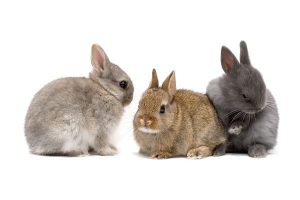Contents
Is it genuine and ARBA accepted?
Many breeders have the AFLs for sale. However, you need to be sure it is a genuine type that can be approved by ARBA, especially if you intend to have it as a show animal.
We already looked at some of the American Fuzzy Lop insight, origin, facts and care. We will focus more on identification, colors, and characteristics.

Weight: 3.5 – 4 lbs.
A senior (adult) should weight about 4 pounds and a junior AFL not above 3.5 pounds. Juniors (baby lops) should not be taken to a class of seniors unless they are at least six months old. Ideal weight for a mature one should be 3.5 lbs.
Head and neck – “head of fancy.”
Its head is supposed to be round and ball-like, and its face should be flat and massive, close to its shoulders at a mid-height. This makes it look like it does not have a neck.
AFL ears
It ears must cascade down it cheeks going about 0.5 to 1 inches below its jaw and covered with its ordinary wooly fur.
It's body
According to its Official Club, its “body should be compact and cobby, with a width equal to height at the shoulders, loin, and hips. The spinal column is not to be prominent nor should the hip/pin bones standout.”
When you touch it, this bunny should be well-muscled and have a very smooth feel. Ensure if you move your hand from the shoulder its hips, you should not feel the hips, and its hips to feet should not angle inward.
Wool or fur
Adults or senior AFLs should have dense fur with well-distributed guard hairs that do not felt or resemble those of the French Angora. This fur should not be very silky or soft but be full of life. This makes caring for the wooly coat easy.
The average length of the wool should be from 1.5 inches to 2 inches, with the 2” often preferred as opposed to the shorter one.
Unlike adult AFLs, the juniors will have wool that resembles the Angora since it has fewer guard hairs. Expect the fur to tangle since the fur is soft and frequent grooming will be required to avoid tangling. At about six months, the wool molts out, and it gets a senior's texture.
Accepted colors and pictures
There is a total of 19 accepted colors which include blue, chinchilla, chestnut, lynx, squirrel, opal, tortoiseshell (black & blue), blue-eyed white, pointed white, lilac, chocolate, ruby- sable point, eyed white, Siamese smoke pearl, Siamese sable, fawn, black, and orange.
These colors are divided into the Agouti, pointed, broken, self, shaded, wideband groups.
- Agouti - Chinchilla, Lynx, Opal, Squirrel, Steel or Sable Chinchilla colors
- The broken can have any color together with white. It should also have nose markings and colored ears.
- Pointed white should have a pure white body, “and markings must be either black, blue, chocolate, or lilac and must be on the tail, feet, nose, and ears,” states the Ephiny.net
- Self - Blue Eye Red and Blue Eyed White, Blue, and Black,
- Wideband - Fawn, and Orange
- Shaded - Smoke Pearl, Blue Tortoise Shell, Tortoise Shell, sable point or Siamese Sable
To help you further, you need to look at some of the American Fuzzy Lop rabbits pictures for further guidance on their colors.
However, you can get other shades or colors from the breeders. Not that, some colors may not be recognized by ARBA.
How much do American Fuzzy Lop cost - Prices
Their prices will vary from one breeder to another and whether they are with pedigree or without and their general condition. From $25+ you should get one
For instance, Lop Rabbitry
Show quality cost between $100 to $200+, the brood quality price is about $50 to $100 while pets will go for $25 to $60 and not pedigreed
References and further readings
- https://aflrc.weebly.com/
- https://ephiny.net/all-about-american-fuzzy-lops/


Leave a Reply
You must be logged in to post a comment.